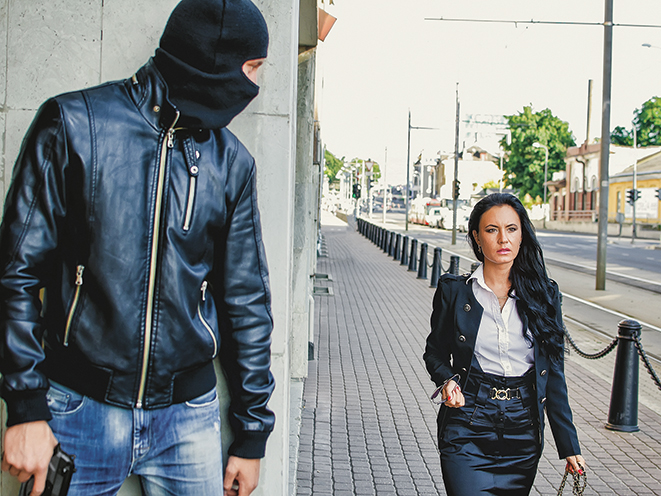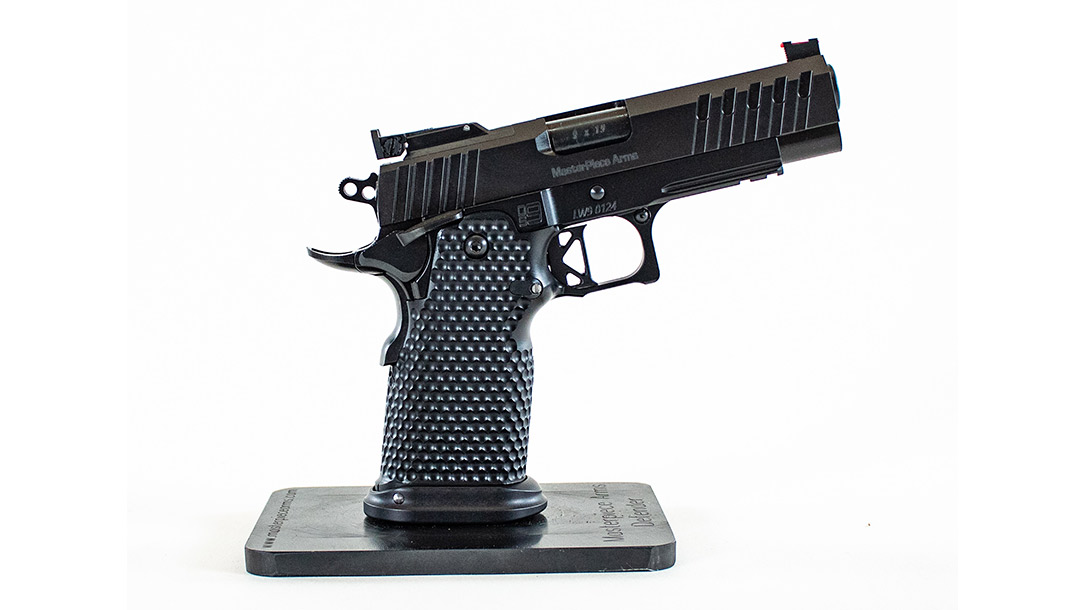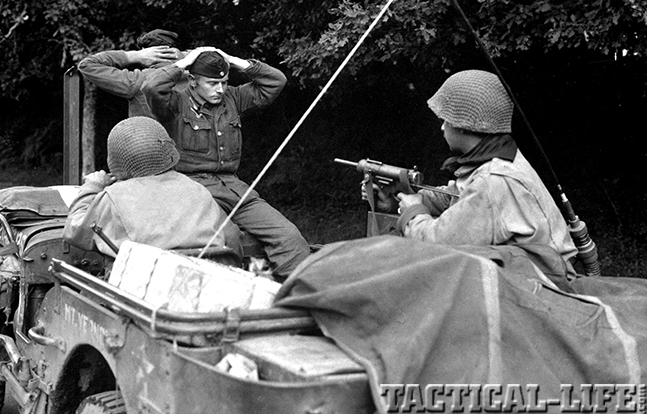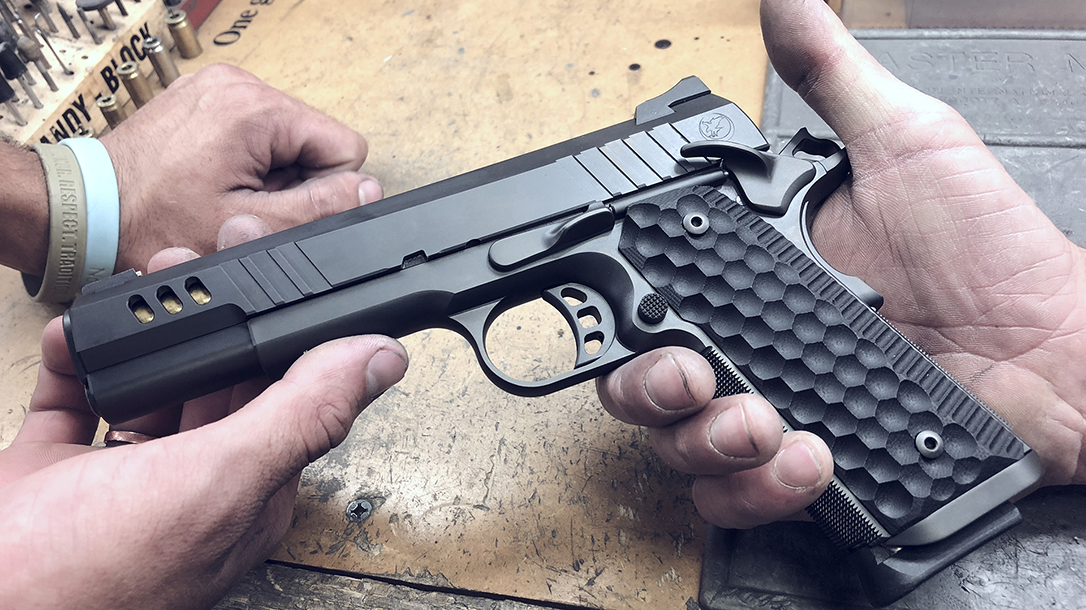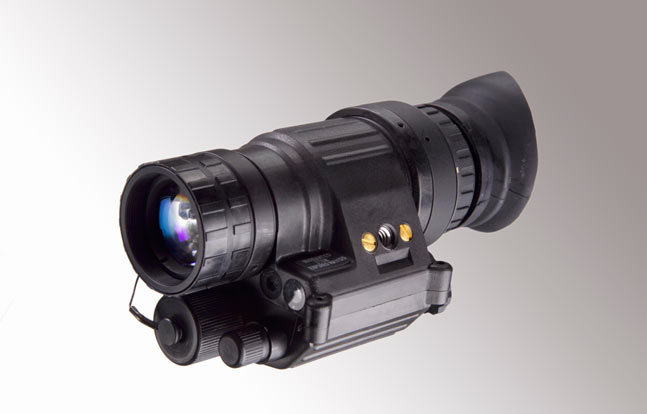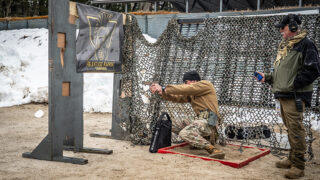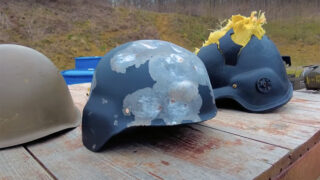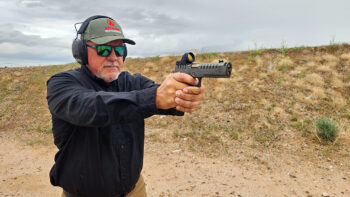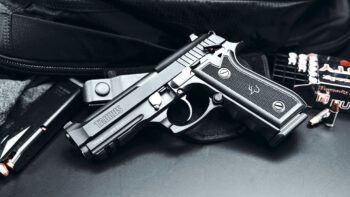Self-defense professionals often advise their students to “Live in Condition Yellow.” This terminology comes from one of the all-time great personal protection teachers, the late Lt. Col. Jeff Cooper. He was the first to popularize the concept of color codes to describe levels of alertness and preparedness.
In Condition White, one was unaware of his or her surroundings and unprepared to swiftly react to sudden danger. Next up on the scale was Condition Yellow, a state of relaxed alertness. Condition Orange is a heightened awareness focused on gathering input when there is reason to believe that danger is present. Col. Cooper’s continuum ended at Condition Red, when the danger had been located and identified, and it was conflict time. Some of us went with a fifth color code, Condition Black, delineating Red as the gunpoint situation with a threat clearly identified, and Black being “lethal assault in progress” upon us or other innocent people, the point at which we had no alternative but to neutralize the threat.
In this article, we’ll focus on Condition Yellow, the cultivation of a constant “relaxed alertness.” We have long called it “situational awareness.” Let’s examine some of its elements.
What Does Situational Awareness Entail?
It begins with knowing where we are and who is around us. Whether you’re driving or walking, ask yourself, without waiting to see the next road marker or street sign, could you tell someone exactly where you are right now? Without checking your driving mirrors or swiveling your head, could you describe the nearest vehicle or pedestrian and know how far they are behind you? The uninitiated think this is paranoia or hyper-vigilance.
On the contrary, it’s common sense. Leave self-defense out of it for a moment. Let’s say you’re driving on a lonely road, whether in the hottest desert or a snow-swept northern landscape, and you come across an overturned automobile, with multiple severely injured people inside. Suppose further that a working GPS is not available to you. Could you vector rescue personnel to the scene in time to save their lives? You are taking a late-night stroll through a park in a city you’re visiting and a jogger in front of you suddenly falls to the ground and stops breathing. Can you describe your location sufficiently to get paramedics there while there’s still time to save him?
Now, inject self-defense into the mix. It’s just another kind of emergency—not something most of us face every day, but something that any of us could face on any day. Take for example the importance of knowing who’s near you. Did you ever see a friend on the street and wave, and they appeared to look right through you and keep going? Note that when we go about absorbed in our own thoughts, we fall victim to what is recognized as “inattentional blindness” and “inattentional deafness.” The definition is simple: If we are not looking for something, we very likely won’t see it even if it’s within our field of view, and if we are not listening for something, we may not hear it, even if the sound comes from nearby.
Every detective in America has interviewed mugging victims or rape victims who said, “The attacker came from nowhere.” No, he didn’t. The victim simply didn’t see or hear the attacker coming in time to do anything to escape the attack or thwart it. The essence of Condition Yellow is to look and listen. It is to know that the attack is about to happen, and be prepared to either fight or fly. Alertness will give you a powerful advantage.
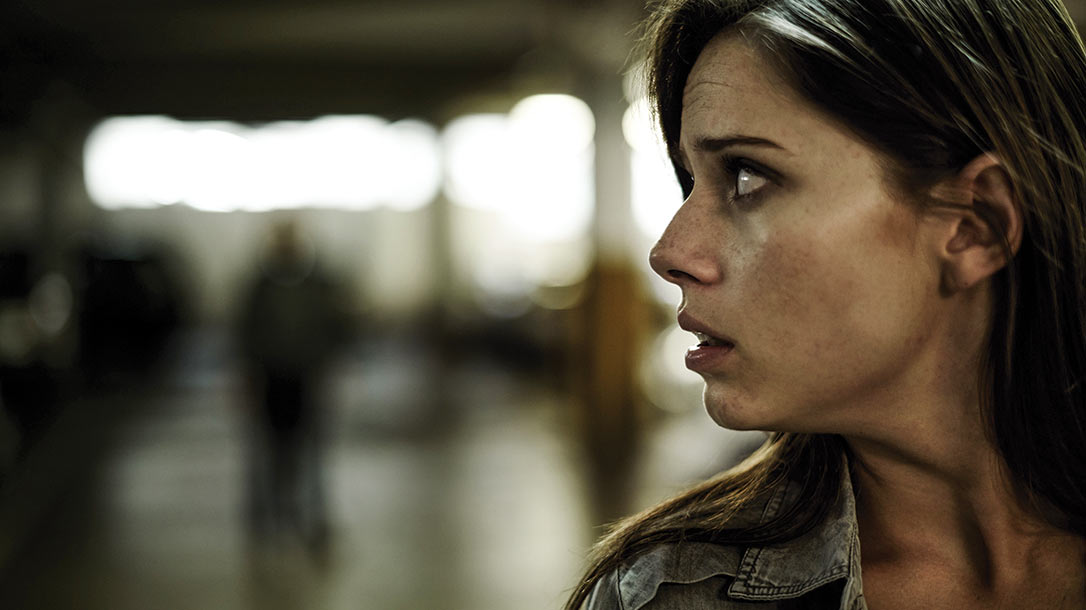
7 Tips & Tactics for Staying in Condition Yellow
1. Know Your Surroundings
Part of situational awareness is knowing where you’ll move if there’s trouble. In a fancy restaurant, you might tip the maitre’d extra to seat you away from the kitchen, but if there’s trouble that “undesirable” seat is where you want to be. Mass murderers enter through the front (Google “Luby’s Cafeteria shooting”) and robbers hit the cashier’s stand near the front door. If you are near the kitchen, you can quickly exit the scene through the swinging doors. There will be hard cover there (industrial-grade stoves, freezers and refrigerators), and a readily accessible exit out the back or side of the establishment. Always remember that your GPS, in your car or on your phone, can quickly direct you to the nearest hospital or police station.
2. Have an Exit Plan
Today more than ever, the internet allows you to check out high-risk versus lower-risk travel routes and destinations. Remember the good advice of retired Marine officer and longtime survival guru John Farnam: “Avoid the ‘three stupids.’ Don’t go to stupid places or do stupid things with stupid people.” Whether it’s travel during bad weather or going someplace you didn’t really want to be, have an exit plan. It’s true of business trips, vacations, blind dates, and work assignments you had to accept when you didn’t want to.
3. Become a People-Watcher
When discussing this topic, I hear people say indignantly, “I don’t want to live in a world where I have to constantly be looking and listening for danger! I want to enjoy my life!” My answer is always, “These things are not incompatible.” Condition Yellow doesn’t make you paranoid; Condition Yellow makes you a “people-watcher.” When you stay alert to your surroundings, you see the beauty around you. I remind my students that people are always telling us to “stop and smell the roses,” and that the corollary is, if you’re looking for thorns in the rose bush, you can’t help but smell the roses.
4. Don’t Tune Out
Don’t block your hearing with earbuds playing music. You will not only miss many of the wonderful sounds around you in the real here-and-now world, but you won’t be able to hear danger signals, either. When you read—whether it’s print on paper or on your smartphone—try keeping your head up. Bring the reading material to your eye level, or just below it. Your peripheral vision will allow you to see approaching danger.
5. Always Carry Illumination
Criminals tend to favor darkness. You want to be able to see the danger, avoid the danger and perhaps even dazzle or blind the source of that danger. Today’s flashlights are better than ever. They’re so small that you can carry two, even in a suit. Modern smartphones have illumination capability built in. If nothing else, secondary flashlights can help you find the one you dropped in a dangerous scenario.
6. Know That Anything Can Be a Weapon
Not carrying a weapon, per se, doesn’t make you unarmed. I’ve seen cases where everything from a lamp to a coffee table was used to disable or even kill a criminal attacker. A pen with an exposed tip can be an effective stabbing weapon. Google “Kubotan.” Karate master Tak Kubota based his system of choke escapes, takedowns, and strikes on the heavy-duty Cross ballpoint pen. A $10 Mini-Mag flashlight can also be used effectively for Kubotan self-defense techniques.
7. Make Use of a Car Alarm
Many personal safety advisors and security consultants recommend maximizing the alarm feature on modern electronic car key fobs by using its incessant “beep beep beep” sound as a panic button. Many have advised keeping the device in hand when walking to one’s car in the dark and keeping it by the bed at night. The reason behind this is that it can distract your attacker, making him turn his head reflexively toward the sound and giving you a brief opening in which you can go for your own weapon, or attempt to disarm him if you’re sure you can bring it off. When using the button from inside a structure, test it beforehand to make sure it will sound when activated. Such fobs have a limited range, and obstacles may be a factor, too.








